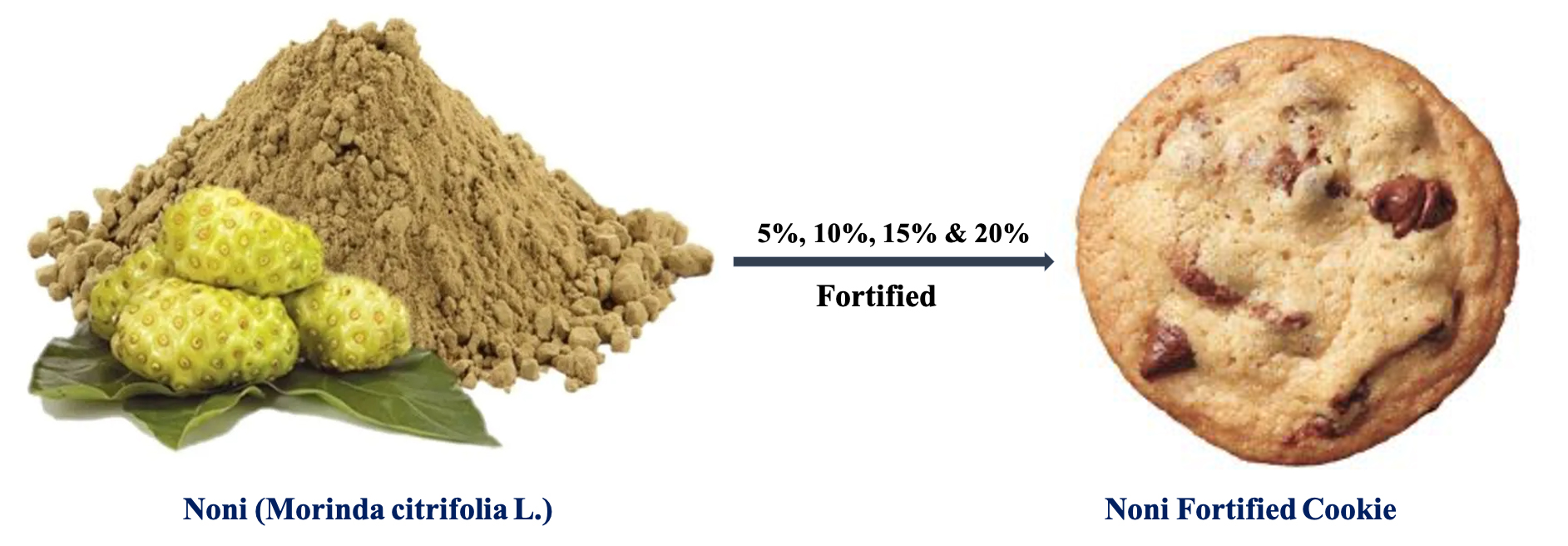Fortified noni (Morinda citrifolia L.) cookies: formulation, properties, antioxidant activity, sensory traits
DOI:
https://doi.org/10.31989/bchd.v6i7.1150چکیده
Background: Noni, also known as Morinda citrifolia L., is a perennial herb with Southeast Asian origins that has been used medicinally for over 2000 years. Noni drew the interest of researchers from the pharmaceutical and food industries due to its adaptability and utilization of the plant's structures for various food applications. The essential industrial products of this plant are beverages, leaf powders, oil from seeds, and powders from dried fruits.
Objective: This study aimed to incorporate noni fruit powder with different concentrations to extend the cookie’s shelf life and nutritional properties.
Methods: In the formulation of the cookies, noni fruit powder was fortified with four different concentrations (5% - NFPFC5, 10% -NFPFC10, 15% - NFPFC15, and 20% - NFPFC20) with wheat flour. The physical properties, antioxidant activity, and sensory characteristics of cookies fortified with noni fruit powder were studied.
Results: There was no significant change in the physical properties of fortified cookies with noni fruit powder. The antioxidant properties were enhanced with the higher concentrations of fruit noni powder fortified with cookies. Sensory panelists preferred cookies with 5% noni (NFPFC5) concerning organoleptic characteristics.
Conclusion: The present study is to understand the herb's value by recommending the nutritional qualities and sensory evaluation of noni fruit powder cookies. Future studies on the use of noni fruit powder in different food industries with its applications in terms of safety and quality are necessary.

Keywords: Noni powder, antioxidant, Morinda citrifolia, sensory acceptance, cookies.
چاپ شده
شماره
نوع مقاله
مجوز
Any manuscripts or substantial parts of it, submitted to the journal must not be under consideration by or previously published in any other journal or citable form. Authors are required to ensure that no material submitted as part of a manuscript infringes existing copyrights or the rights of a third party. In submitting one's article in any form, the author has assigned the FFC publishing rights and has agreed to an automatic transfer of the copyright to the publisher. This is so that the FFC may create print option journals, for example, at the FFC’s discretion. If the author wishes to distribute their works by means outside of the FFC, for example within their community, they will have to place a request.
Correspondence concerning articles published in Functional Foods in Health and Disease is encouraged. While derivative works (adaptations, extensions on the current work, etc.) are allowed, distribution of the modified material is not allowed without permission from the FFC.